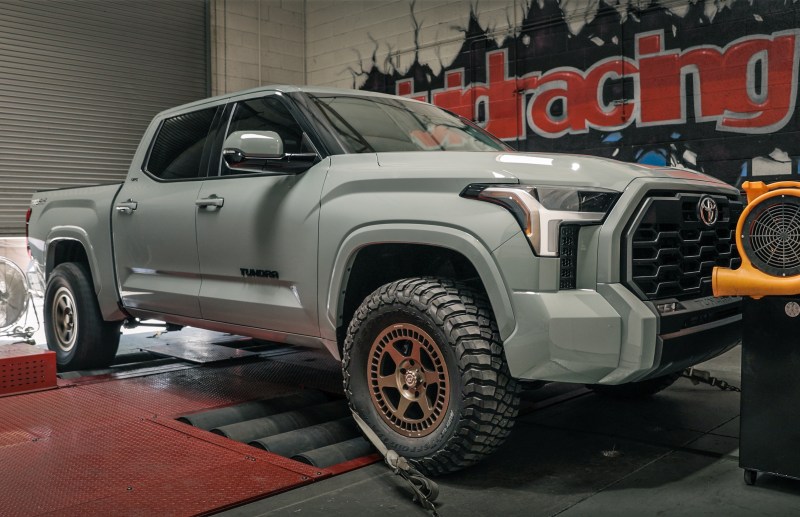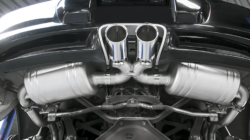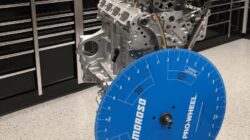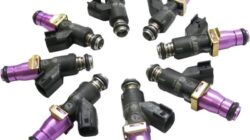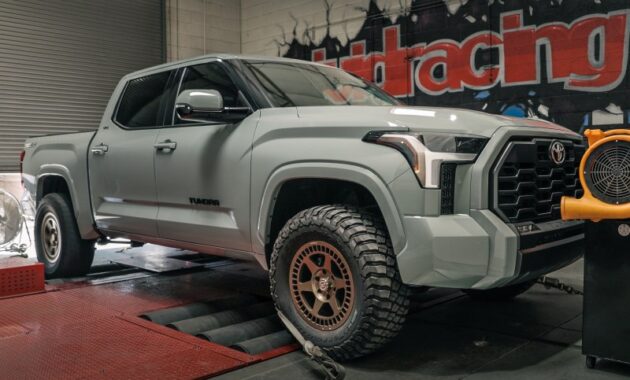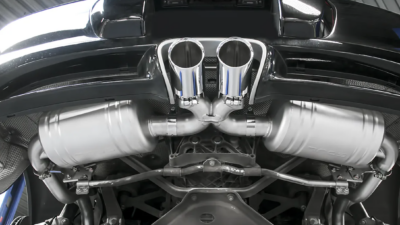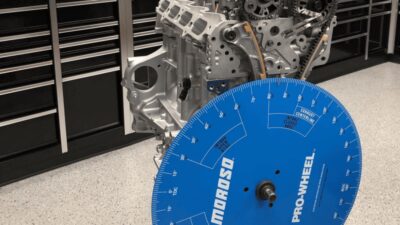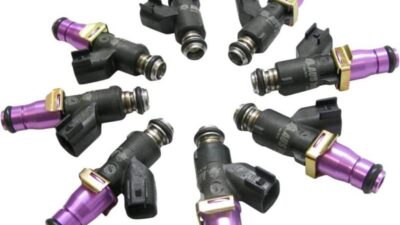ECU tuning is the act of altering the Engine Control Unit (ECU) software in a vehicle in order to maximize engine performance, increase fuel economy, and lower emissions. Car enthusiasts and mechanics who want to get more power out of their engines or improve the overall performance of their vehicles frequently use this technique. Users may adjust fuel supply, ignition timing, and air-fuel ratios, among other engine characteristics, by performing ECU tuning using specialist software.
Table of Contents
ToggleWhat is ECU Tuning?
The Engine Control Unit (ECU), a complex computer that manages engine performance, is at the center of every contemporary car. The ECU regulates emissions, fuel injection, and ignition timing, among other engine performance factors. Users can adjust these settings to get desired results, such more horsepower, better fuel economy, or lower emissions, by changing the ECU’s software.

ECU tuning entails using a diagnostic port to link a computer or portable device to the vehicle’s ECU. Users may see and alter the engine’s performance maps—basically, a set of data tables that specify the engine’s response to various circumstances—by utilizing ECU tuning software.
Types of ECU Tuning Software
There are many different types of ECU tuning software available, from simple, non-customizable programs to sophisticated, professional-level options. Among the most popular categories of ECU tuning software are:
- Basic Tuning Software: These are entry-level programs made for anyone who wish to modify the ECU of their car in a straightforward way. Although they usually have few modification possibilities, they are easy to use and appropriate for novices.
- Advanced Tuning Software: Professional tuners frequently use these applications because they provide more extensive customization possibilities. They are perfect for performance tuning since they enable users to precisely modify a variety of engine settings.
- Open Source Software: Users are free to share and alter some ECU tuning software packages that are made available as open-source applications. Those who are aficionados and like experimenting with various tuning setups are fond of this kind of software.
Key Components of ECU Tuning
Before diving into ECU tuning, it’s crucial to understand the key components involved in the process:
- gasoline Delivery: An important aspect of engine performance is the quantity of gasoline delivered into the engine. Users may tailor the air-fuel combination for optimal power or fuel economy by modifying the fuel delivery settings.
- Ignition Timing:The timing of the spark plug firing in relation to the piston’s location within the combustion chamber is referred to as ignition timing. Optimizing the timing of ignition can result in increased power output and fuel economy.
- Air-to-Fuel Ratio (AFR): This is the combustion chamber’s air-to-fuel ratio. To achieve optimal combustion, which has a direct influence on engine performance, fuel efficiency, and emissions, a suitable AFR is necessary.
- Volumetric Efficiency (VE) Tables: Based on a range of operating circumstances, VE tables calculate the volume of air entering the engine. One of the most important steps in optimizing the engine’s performance is adjusting these tables.
Benefits of ECU Tuning
ECU tuning offers several benefits, making it a popular modification among car owners and performance enthusiasts. Some of the key advantages include:
- Enhanced Power and Torque: ECU tuning may result in notable gains in horsepower and torque by fine-tuning the engine’s performance maps. As a result, the engine becomes more responsive and has better top speed and acceleration.
- Fuel economy: By adjusting the engine’s ignition timing and air-fuel ratio, ECU tuning may also increase fuel economy. This may result in using less gasoline and making fewer journeys to the gas station.
- Decreased Emissions: By guaranteeing that the engine operates effectively and cleanly, properly tuned ECUs may assist minimize hazardous emissions. In order to comply with environmental rules and reduce the vehicle’s environmental effect, this is very crucial.
ECU Tuning Process: A Step-by-Step Guide
The process of ECU tuning involves several steps, from choosing the right tuning software to fine-tuning the engine’s performance maps. Below is a step-by-step guide to help you get started with ECU tuning:
1. Choose the Right ECU Tuning Software
Choose an ECU tuning software package based on your desired tune and skill level. Start with a basic software package that provides user-friendly features and simple instructions if you are new to ECU tuning. Professional-grade software that offers additional control over engine characteristics is a good option for experienced users.
2. Understand Your Vehicle’s ECU
It’s crucial to fully comprehend the ECU and its unique design of your car before attempting any alterations. This involves being aware of your car’s year, make, and model in addition to its engine type. Understanding the capabilities of various ECUs will enable you to make well-informed judgments during the tuning process.
3. Connect the ECU Tuning Hardware
The majority of ECU tuning software sets include a hardware interface that connects to the vehicle’s ECU. Usually, a specific diagnostic port or the OBD-II port on the vehicle are used to link this device to the ECU. After the hardware and software are linked, you may view the ECU’s performance maps and make changes.
4. Start with Basic Adjustments
Start by adjusting the fuel supply and ignition timing of the ECU’s performance maps. These first adjustments will act as a starting point for further adjustments. A wideband Air-Fuel Ratio (AFR) meter, which offers real-time feedback on the air-fuel mixture, is a great tool to use to monitor the engine’s performance.
5. Adjust the Volumetric Efficiency (VE) Tables
When estimating how much air enters the engine under various circumstances, VE tables are essential. To begin, set up the VE tables’ fundamental parameters (displacement, cam profile, injector size) according to the details of your engine. Next, modify the tables slightly and test the engine’s performance at different load levels and RPMs.
6. Perform Data Logging and Analysis
An integral component of the ECU tuning procedure is data logging. During test drives, it entails logging engine performance metrics including load, RPM, and AFR. After that, this data may be examined to determine which regions still require modification. Data logging is a feature that many ECU tuning software programs offer, enabling you to analyze and improve your tuning efforts.
7. Fine-Tune the Performance Maps
Proceed to refine the performance maps using the information gathered from the testing phase. To get the required performance characteristics, minor modifications to fuel supply, ignition timing, and VE tables may be necessary. Engine performance can be significantly affected by even little adjustments, so proceed cautiously and methodically.
8. Test and Verify the Results
It is crucial to properly test the car after tuning in order to make sure the changes have resulted in the anticipated outcomes. This might entail conducting many test drives in various scenarios, such wide-open throttle (WOT) acceleration, city driving, and interstate cruising. Utilize the information gathered from these tests to confirm that the engine is working safely and effectively.
Common ECU Tuning Pitfalls to Avoid
While ECU tuning can yield impressive results, it’s important to approach the process with caution. Here are some common pitfalls to avoid:
- Overtuning: Excessive engine performance might result in mechanical failure and reduced dependability. Always tune your engine within the components’ safe limitations.
- Ignoring Emissions Compliance: Changing the ECU’s power output occasionally results in increased emissions, which might not be allowed under local laws. Before making any changes, make sure to verify the emissions standards.
- Insufficient Data Logging: Inadequate tuning results may arise from a failure to log and evaluate performance data. Always base your tuning decisions on data recording.
Conclusion
ECU tuning is an effective technique for enhancing engine performance, boosting fuel economy, and cutting emissions. Gaining the greatest outcomes from ECU tuning may be facilitated by knowing the fundamentals and following a systematic procedure, regardless of experience level. You may unleash the full power of your car’s engine by choosing the appropriate software, making wise modifications, and steering clear of frequent traps.


